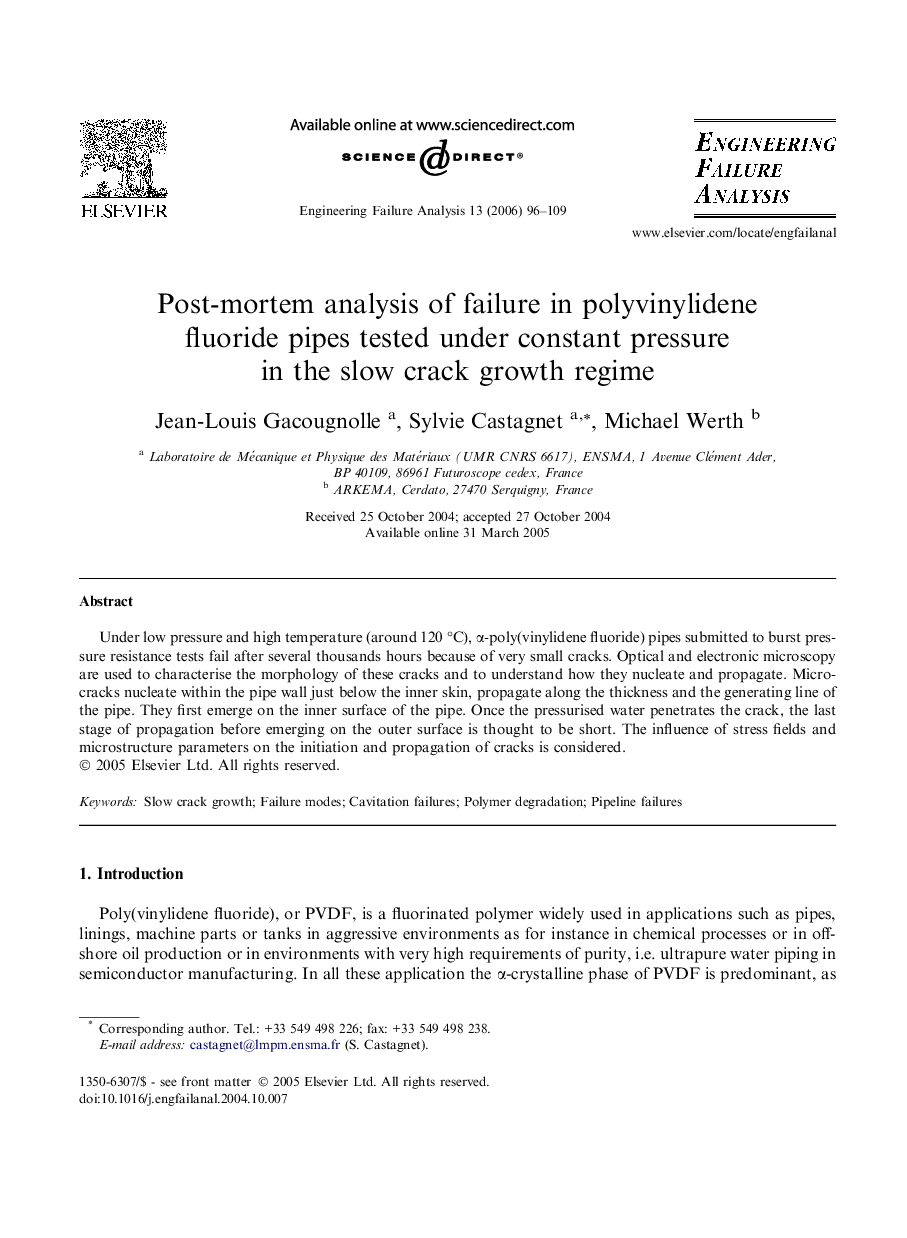| Article ID | Journal | Published Year | Pages | File Type |
|---|---|---|---|---|
| 764588 | Engineering Failure Analysis | 2006 | 14 Pages |
Under low pressure and high temperature (around 120 °C), α-poly(vinylidene fluoride) pipes submitted to burst pressure resistance tests fail after several thousands hours because of very small cracks. Optical and electronic microscopy are used to characterise the morphology of these cracks and to understand how they nucleate and propagate. Microcracks nucleate within the pipe wall just below the inner skin, propagate along the thickness and the generating line of the pipe. They first emerge on the inner surface of the pipe. Once the pressurised water penetrates the crack, the last stage of propagation before emerging on the outer surface is thought to be short. The influence of stress fields and microstructure parameters on the initiation and propagation of cracks is considered.
